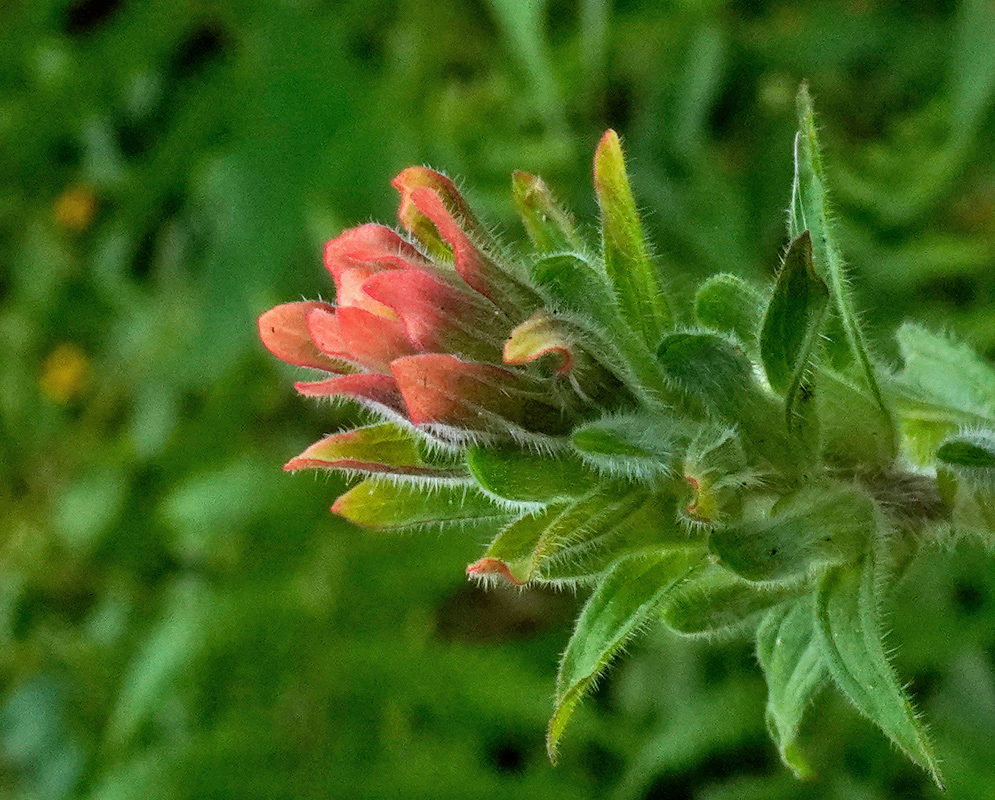This post has 11 Simple Fields-fields attached. Show fields.

Castilleja arvensis is native to Mexico, Central America, and much of South America. It is a hemiparasitic annual herb, meaning it attaches to the roots of neighboring plants to draw nutrients while still carrying out photosynthesis. This ecological strategy allows it to colonize nutrient-poor soils and thrive in regions where other plants may be less competitive. The plant is noted for its hairy, lanceolate leaves and showy bracts that surround the true flowers. The bracts are reddish to orange-red, giving the appearance of a bright floral display, while the actual flowers are narrow, tubular, and often greenish-yellow, emerging just beyond the bracts. The hairs on both stems and leaves are a characteristic feature, giving the plant a soft but roughened texture. Castilleja arvensis has been used in folk medicine in parts of Latin America, including treatments for fever and infections, though these uses are traditional and not clinically established. Its wide distribution and vivid bracts make it recognizable in the field, often growing in association with grasses and other small herbs in seasonally open habitats. Photographed in Ecuador.

